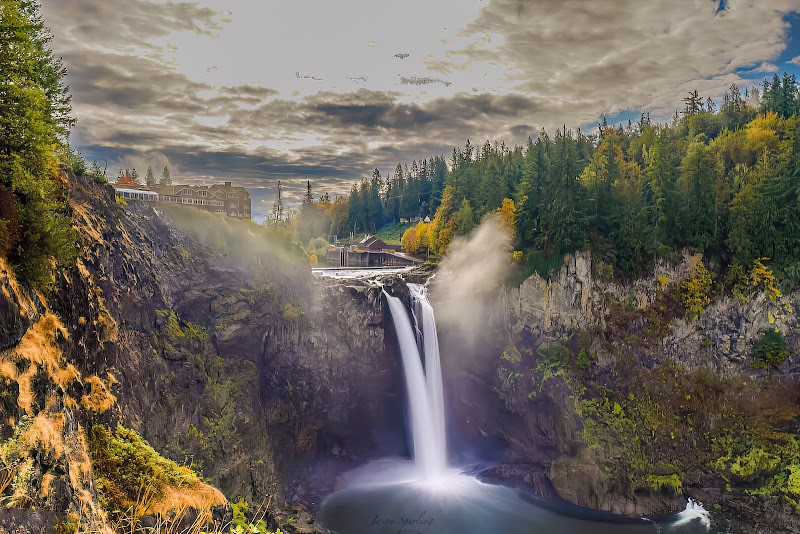
Rivers, Lakes, and the Sea: How to Choose Your Ideal Paddle Destination
Deciding between river rapids, serene lakes, or the open sea can define your paddling adventure. Discover how to match your skill and desires with the distinct challenges and thrills of each water type, and prepare smartly for your journey.
Check Current and Tide Conditions
Currents and tides can drastically change paddling difficulty. Always check local conditions before setting out to avoid unexpected challenges.
Wear a Suitable Personal Flotation Device
Rivers with rapids or open sea conditions require PFDs rated for swift or rough waters for maximum safety.
Start Early in the Day
Calmer winds and predictable weather usually occur in the morning, offering safer and smoother paddle conditions.
Pack Waterproof Essentials
Use dry bags to protect electronics, maps, and extra clothes from splashes or capsizing. Preparedness increases enjoyment and safety.
Rivers, Lakes, and the Sea: How to Choose Your Ideal Paddle Destination
Paddling is more than just a sport — it's an immersion into landscapes that challenge and welcome you simultaneously. Whether it's the winding defiance of a river, the calm expanse of a lake, or the open pulse of the sea, each waterway carries its own rhythm and personality. Choosing the right paddle destination means matching your adventure style with nature’s variable temperament.
Rivers dare you with their currents and twists, coaxing your skills with changing flow and narrowing passages. For those seeking a dynamic journey, rivers demand navigation savvy and offer the thrill of negotiation—rapids spur your focus while bends reveal quiet coves where wildlife rests. Practical tip: research current speed and obstacles, wear a life jacket rated for swift waters, and pack a waterproof bag for essentials.
Lakes invite a steadier cadence, their broad surfaces stretching under changeable skies like a blank canvas. Paddling here is often about endurance and exploration rather than rapid maneuvers. Expect smooth water, occasional wind gusts, and shoreline beauty that rewards a slower pace. Ideal for beginners or those after a meditative trip. Check local wind forecasts and choose calm morning hours to avoid chop.
The sea is a raw encounter with vastness. Tides push and pull; waves challenge balance; currents test your endurance. Salt air sharpens senses; seabirds call overhead as the boat rocks with a rhythm older than history. This setting suits experienced paddlers ready for an unpredictable partner. Study tide tables, wear appropriate gear for salt and cold spray, and never underestimate the power of open water.
Each destination offers sensory highs and tactical demands. Choosing involves assessing your skill, physical readiness, and the experience you crave. Preparation will transform the unknown into discovery: appropriate gear, weather awareness, and respect for natural forces make the difference between risk and exhilaration. Ultimately, the best paddle spot is where your confidence meets nature’s challenge—fiercely itself but inviting to those who come prepared.
Nearby Trips
All Adventures
Boat Charters
Water Activities
Adventures near Seattle, Washington
Discover the unique and memorable adventures that make Seattle, Washington special.
Frequently Asked Questions
How do I decide between paddling a river, lake, or the sea?
Consider your skill level, comfort with current and waves, and what kind of experience you want. Rivers offer adventure with dynamic currents; lakes provide calm and prolonged exploration; the sea demands careful planning and advanced skills for open water and tides.
What safety precautions are necessary for sea kayaking?
Check tide and weather forecasts, wear a PFD designed for rough water, carry communication devices, and inform someone of your plan. Also, be prepared for changes in wind and waves with proper clothing and knowledge of self-rescue techniques.
Can beginners paddle on rivers safely?
Yes, but it’s important to choose rivers with slow-moving water and minimal obstacles. Taking an introductory course or guided trip can build essential skills and confidence.
What is the best time of day to paddle on a lake?
Early mornings often feature the calmest water conditions with minimal wind. Afternoon winds can create chop, which can be challenging especially for beginners.
How do tides affect sea paddling?
Tides influence water levels, currents, and access points. Paddlers must understand tidal cycles because strong currents can increase difficulty or restrict exit routes.
What should I pack for a day paddle trip?
Bring water, snacks, sunscreen, a PFD, waterproof storage for electronics and valuables, a whistle or signaling device, and weather-appropriate clothing. Always prepare for sudden weather changes.
Recommended Gear
Personal Flotation Device (PFD)
Safety first: a PFD appropriate for the water conditions is mandatory for any paddle adventure.
Dry Bag
Keeps valuables and clothing dry whether on calm lakes or splash-prone rapids.
Wetsuit or Dry Suit
Protects against hypothermia in cold water paddling, especially for winter or river expeditions.
Waterproof Map or GPS Device
Helps navigate waterways safely, particularly in unfamiliar or complex environments.
Local Insights
Hidden Gems
- "Alki Beach for evening paddle views of downtown Seattle"
- "Union Bay Natural Area, where urban meets wildlife"
- "Duwamish Waterway with history of industrial transformation"
Wildlife
- "Harbor seals often rest near shoreline rocks"
- "Osprey nesting in tall trees along rivers"
- "Great blue herons fishing in shallow waters"
History
"The waterways around Seattle have been central to indigenous communities and early settlers, serving as transportation routes and sources of sustenance. Understanding local history enriches the paddling experience."
